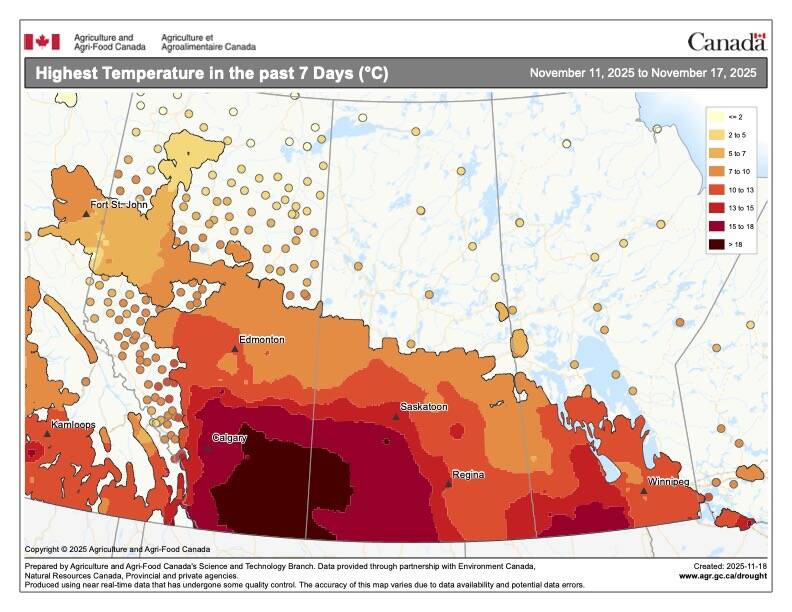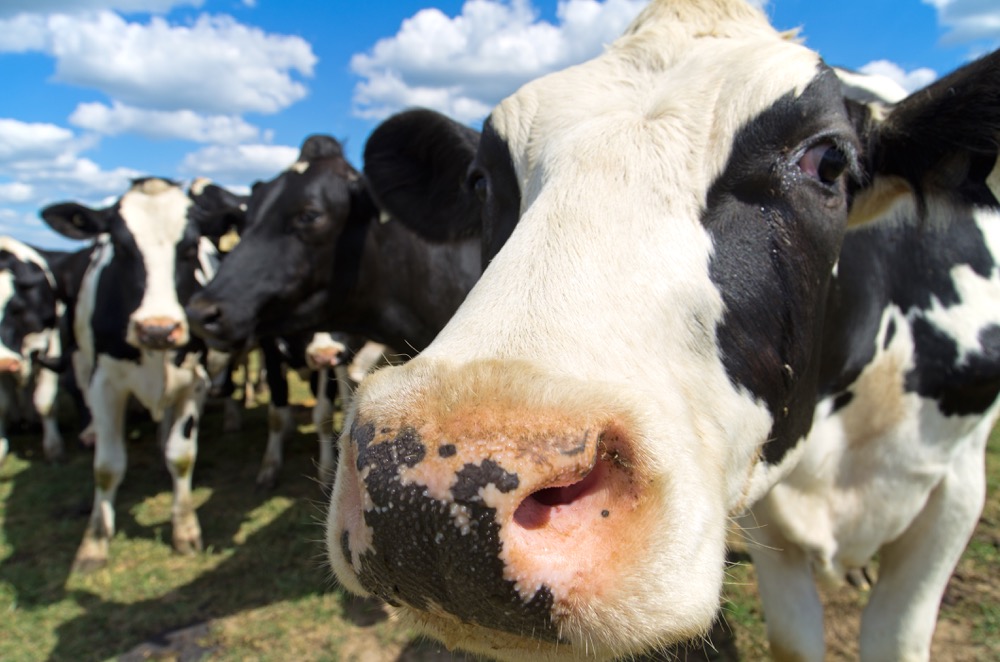This past year Quebec reached a milestone in being able to supply a full 50 per cent of greenhouse vegetables consumed in the province.
The veggies that are widely grown in the province’s greenhouses are tomatoes, cucumbers, peppers and lettuce.
I have been in vegetable fields and greenhouses throughout Canada and abroad, and the abundance is amazing and so is the technology. Traceability, quality control, disease control and production are world class. But greenhouses are expensive to run and one wonders how Quebec achieved this milestone.
Read Also

Is a weather station right for your farm?
Weather stations could make a great Christmas gift for the farmer in your life.
In 2020, the province’s agriculture ministry committed to enlarge total greenhouse production space to 250 hectares (617 acres) by 2025. At the time the greenhouse farmers of Quebec were supplying 30 per cent of the domestic need.
An increase to the needed acreage in five short years would take more than just a goal. And it would need to include other branches of government to ensure the production units were viable.
To ensure that the targets could be met, the provincial energy ministry committed to an expansion of rural electrical networks and the government kicked in support of up to 40 per cent on eligible hydro expenses.
That spurred action and today 25 per cent of greenhouse farms are planning to expand. The target will not be met by 2025. It will be exceeded.
More with Brenda Schoepp: We need to get past the perception that ag is ‘just farming’
This demonstrates the importance of cross ministry collaboration and the power of enabling policy that allows for farming to function at the speed of commerce. There has to be a structure and a landscape that is intentional, measurable and attainable to attract the needed infrastructure and investment.
By comparison, the greenhouse industry in Alberta covers an area of 167 acres. According to the last published greenhouse report, the industry feels threatened from rising energy costs. Only 40 per cent of the greenhouses in the province operate year-round and there is little food processing activity compared to Quebec and B.C.
Early regulatory and infrastructure policy led to an adoption of greenhouse production as an integral part of farming in these provinces. These lighter regulations may seem simple but collectively there has been a huge impact.
The small things become the synergy behind further expansion. It starts with measures such as the recognition of on-farm sales, the designation of artisan products, labelling and promotion of domestic products and the encouragement of diversity in the types of crops grown as well as support for both domestic and export infrastructure.
The fact that nearly all food processing in Canada resides in Eastern Canada and B.C. speaks volumes for the collective of small enabling policies that created both an environment for creativity and for the value adding industry.
There are just over 6,000 food processors in the nation, of which 2,995 are in B.C. and 2,400 are in Quebec.
The world leader in this enabling policy framework is the Netherlands, where 90 per cent of the vegetables are produced in greenhouses or glass houses, as they’re often called.
I recall my visit to what appeared to be a small greenhouse growing micro herbs in 2012 in the town of Monster. The sales at that time were 40 million euros for the tiny plants produced without soil and under the glare of LED lighting. As the owner said, “you do not seed soil or sun to grow food.”
It was inspiring for sure but more important was the internal and well supported drive that secured the Netherlands as the world’s second-largest food exporter and the third most food secure.
In the Netherlands an astounding 29,000 acres are under greenhouse production that supply 90 per cent of the veggies in a country of 17.5 million people. Its infrastructure is the envy of the world.
This took old-fashioned drive and a heavy dose of consistent political will. The overall commitment of the Netherlands to invest in agriculture in conjunction with all the supporting ministries is what differentiates it. No wonder farmers worry when the agricultural policy is threatened.
There are two main focuses in Dutch food policy: Knowledge (which includes a wide lens on research) and value-adding. Like Canada, there are just over 6,000 food processors in the nation.
The questions of food security and food sovereignty can only be addressed with a complete commitment to the well-being of the farmer through enabling policy. When the foundation includes all the pillars of food production and involvement of their stakeholders, then — and only then — will there be a consistent supply of affordable domestic food.
Can we do it in Canada?
We already are regionally, as is evident in the recent announcement from the Quebec greenhouse industry. The models do exist at home and around the world, but it is up to governments to decide if the ministries will work together toward enabling food production policy and societal well-being.
















